This is my "new" Commodore 128D 100% NOT tested, which I bought on eBay. Let's test it! Do you think it will work?

Purchase of the Commodore 128D 100% NOT tested
I occasionally buy some vintage computers for my collection. Unfortunately, sometimes it happens to receive computers that do not work, despite being declared as perfectly fine. Or, it happens to receive computers ruined due to inadequate packaging.
This time, the premises are even worse: will this 100% UNTESTED Commodore 128D, purchased on eBay, work?
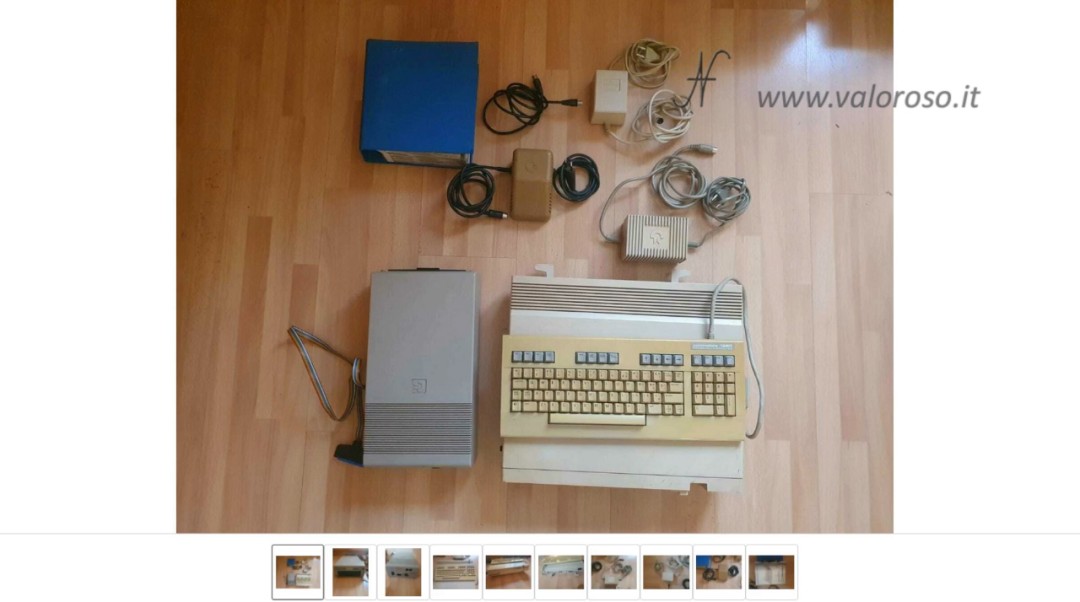
In addition to the Commodore 128d and the keyboard with German layout, there are also a series of accessories that have little to do with the Commodore 128. There are two supplies of the Commodore 64, a power supply of the external drive (which can be 1581, for example), and an external drive Commodore 1541 (which does not require external power supply, however ...).
Ecco il "nuovo" Commodore 128D 100% NON testato!
A few days after the purchase, I was delivered to the 100% non -tested commodore 128d. Here it is, in all its splendor. Will it work? Will it not work? We will find out shortly. All the tools near the computer are needed to find out.

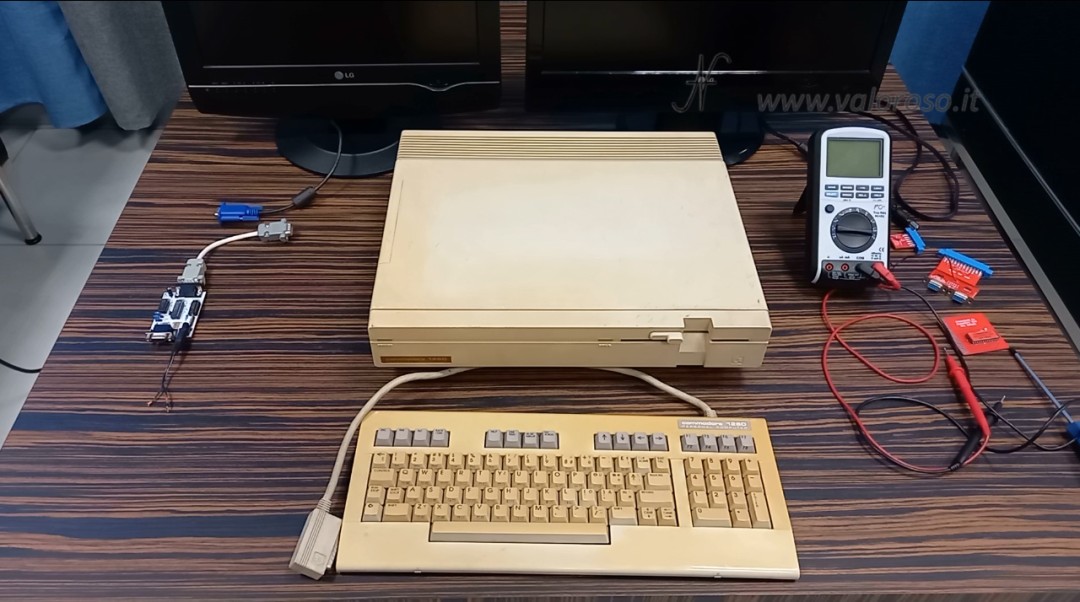
The keyboard has a German layout, in fact the Commodore 128d comes from Austria. The case is plastic, with a side handle. The keyboard can be stayed at the bottom of the case, which has a special compartment.
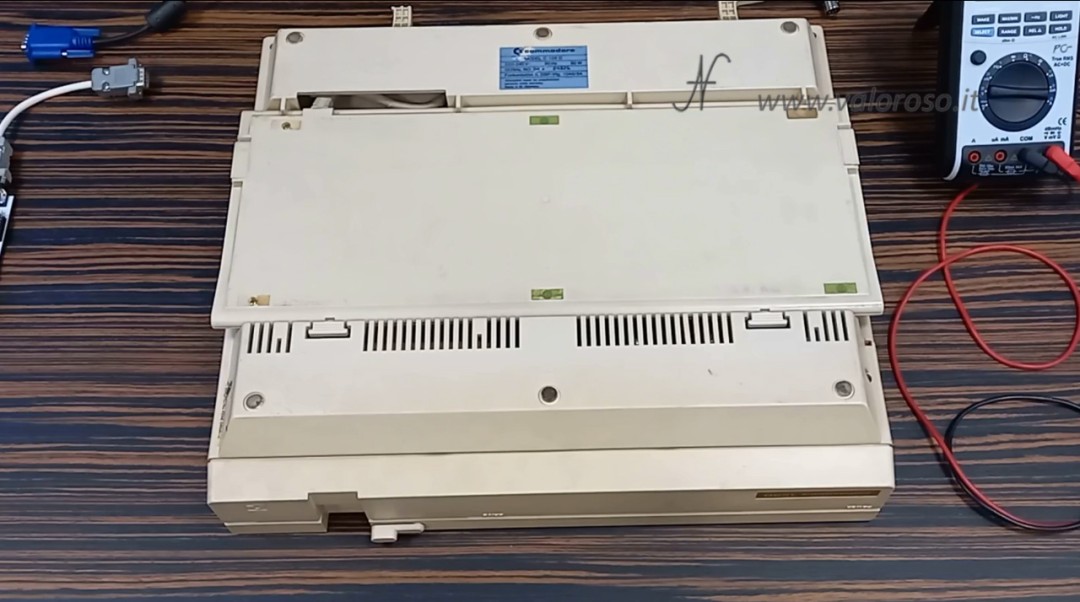
Check supply voltages of the Commodore 128D
Unlike the Commodore 64, Commodore 128 and other home computer models, the Commodore 128D has an internal power supply. Before connecting it to the mains and turning it on, it is advisable to check the supply voltages. They must be corrected! I had written this article To deepen the topic: I invite you to read it.
To check the power supply voltages of the vintage computer, you have to open it. There are four screws to unscrew, at the bottom.
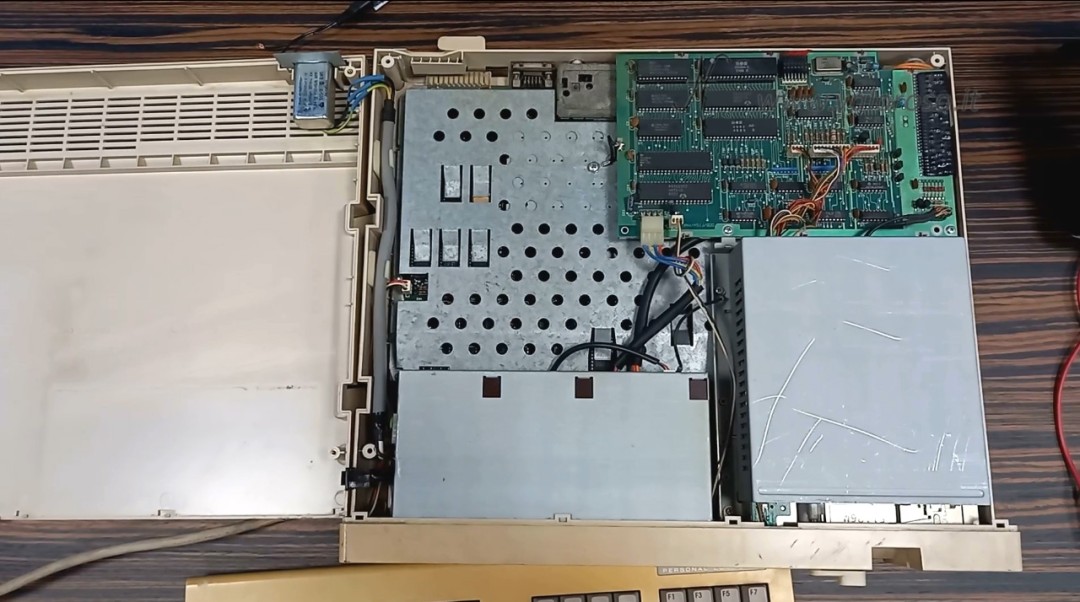
Before giving tension to the power supply, we detach the two connectors that bring power to the controller of the internal floppy disk drive and the computer's motherboard.

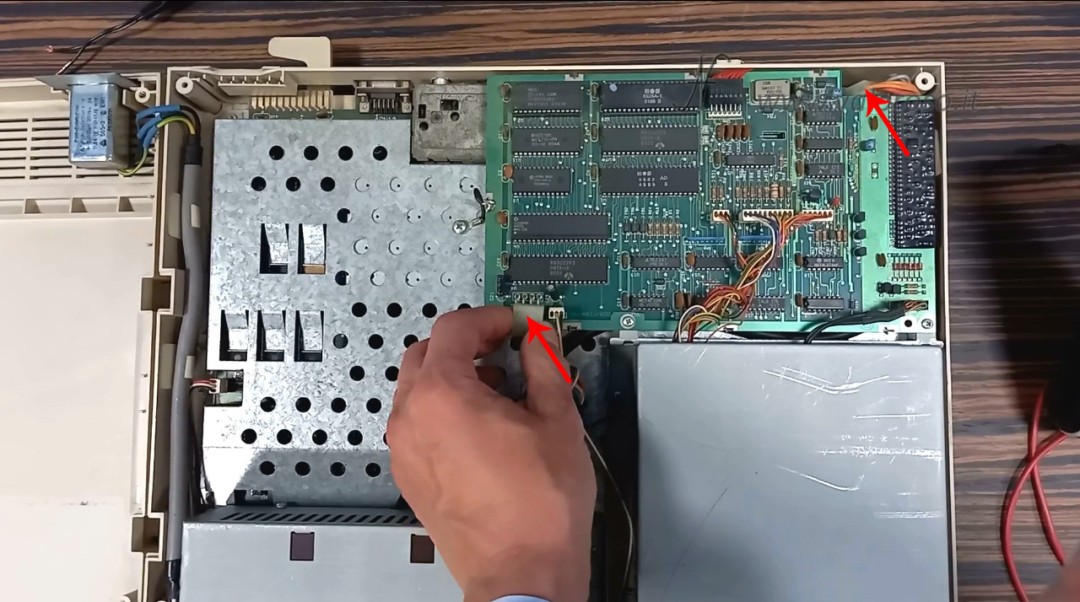
The goal is to be able to feed the computer, try tensions with the tester, but without any incorrect tensions reach the computer cards.
The voltages to be verified are:
- 5V direct current, for computer logic;
- 12V direct current, for floppy disk drive;
- 9V alternating for the SID (on this tension there is a lot of tolerance).
Thankfully, in this 100% UNTESTED Commodore 128D, the voltages are correct.
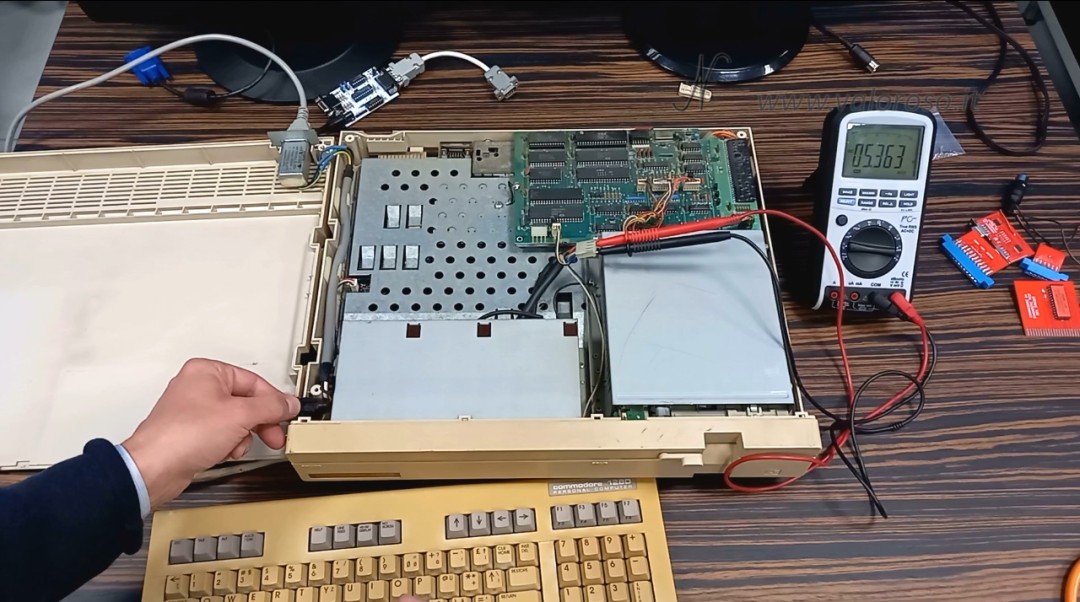
First power on of the Commodore 128D
After reconnecting the two connectors that we have detached to try the power voltages, we can try to feed the computer. With my great surprise, 100% non -tested Commodore 128d ... it works!
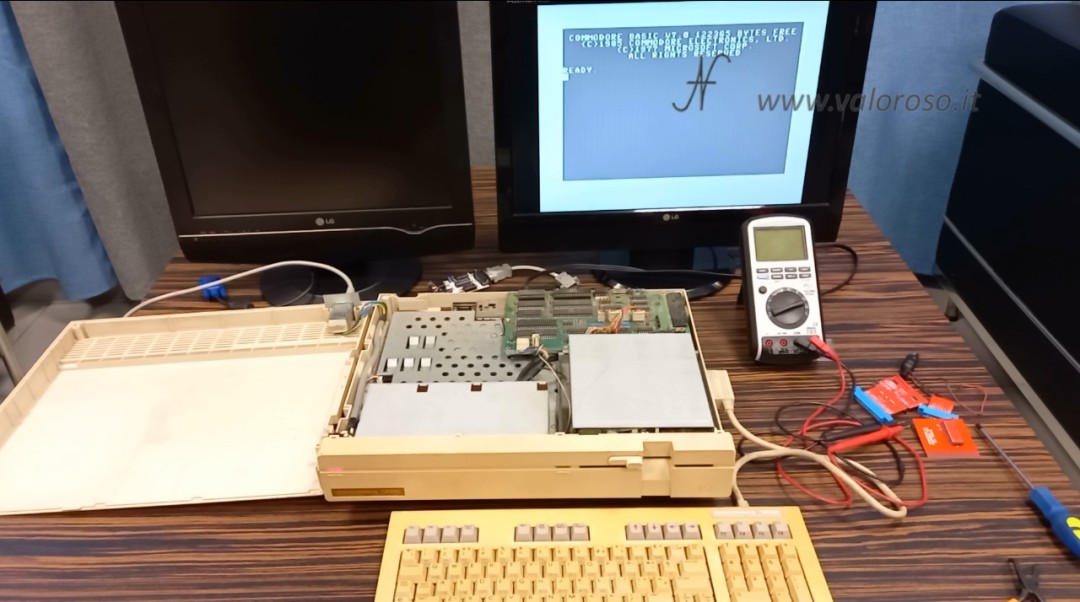
From a more accurate analysis, it emerged that the computer floppy disk drive of the computer cannot read the disks.
The Commodore 128D allows you to use two monitors
This is a speech that I had already deepened in this article: the Commodore 128 (as well as the Commodore 128D) allows you to use two monitors, one with 40 columns of text, one with 80 columns.
To connect a VGA monitor to the RGBI output (the 80 columns of the Commodore 128), a specific adapter is needed, as well as a monitor that supports a horizontal synchronism of 15 KHz. In general, however, monitors support synchronisms starting from 31 KHz. So, most likely, a monitor chosen casually will not be fine.
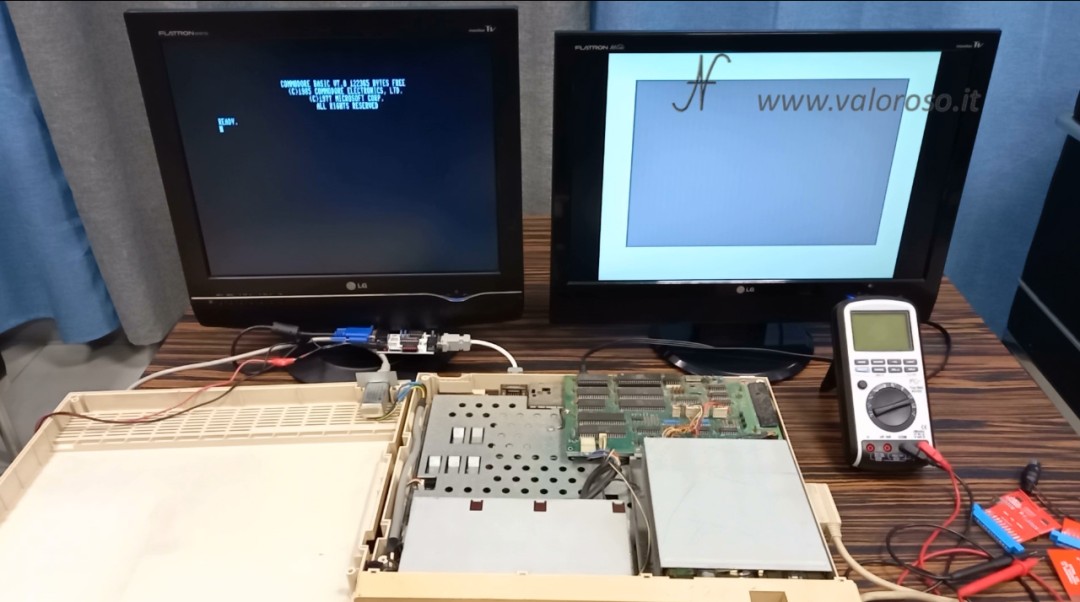
Although you only see one monitor used at a time, the C128 actually allows you to use both monitors so that they display different text (or images).
More in-depth test: the diagnostic test 586220
To carry out a more thorough test of the peripherals and circuits of the Commodore 128D, we can use the diagnostic test 586220, which I had already reviewed in this article. It works for the Commodore 64 and the Commodore 128.
The 586220 diagnostic test consists of an interface to be included in the expansion door, as well as other interfaces to be included in the various computer doors. In the following image, you can see the red diagnostic cards.
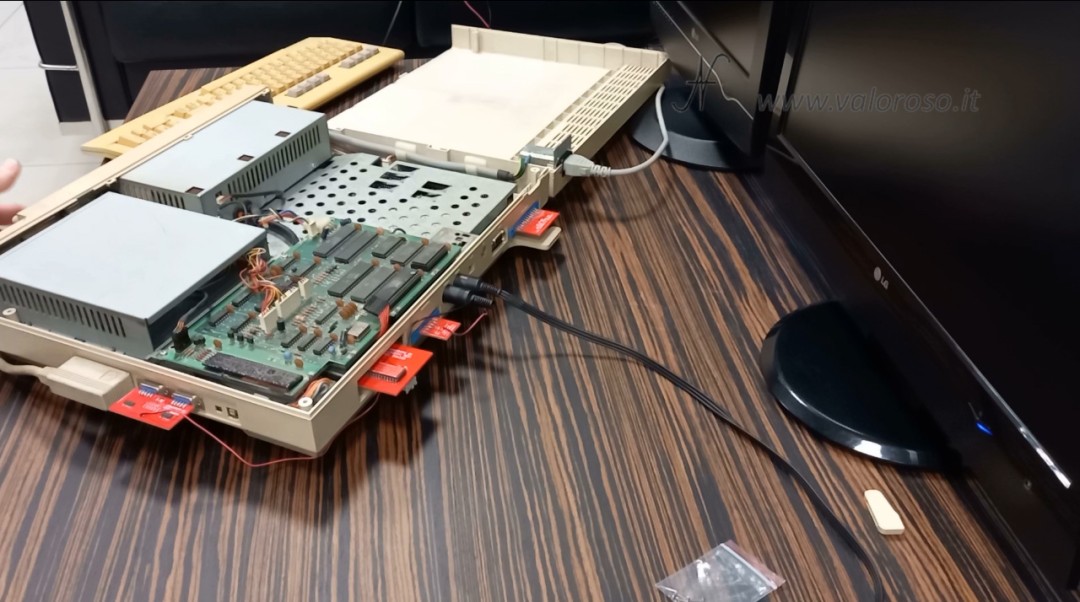
When ignition, the computer starts with the Commodore 64 diagnostics screen 586220. The computer performs several tests (ROM, RAM, SID, computer doors, etc ...).
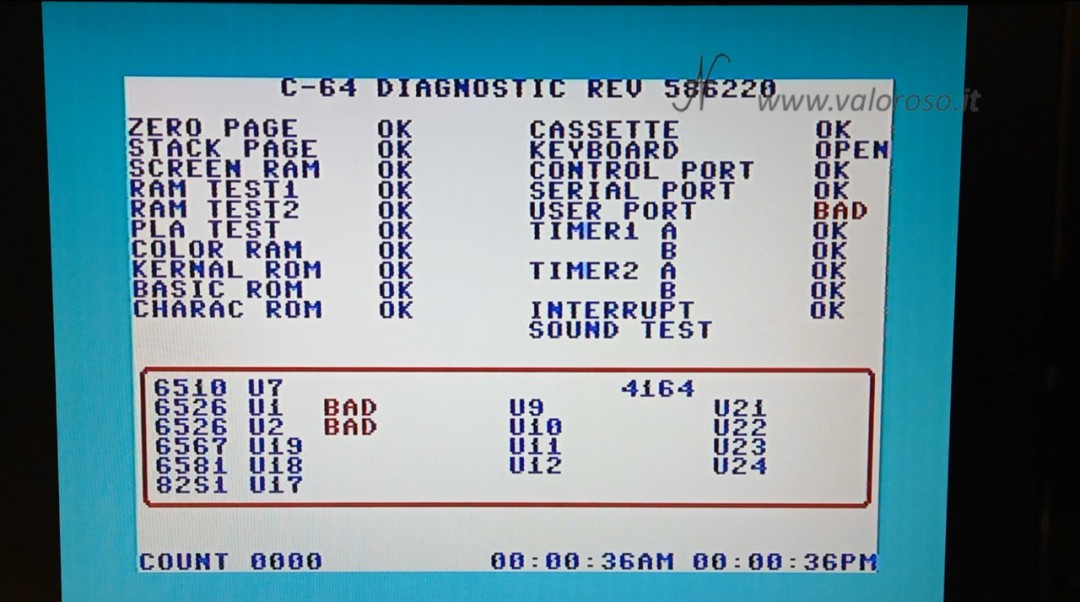
My 100% non -tested commodor 128d may have some user port problems. I don't think it's a difficult problem to solve: either there is a track interrupted on the printed circuit, or there is an integrated failure (the diagnostic already indicates which integrated can be responsible).

What do you say, I'm happy with this Commodore 128D 100% NOT tested?
Would you be satisfied with such a purchase, bought as 100% untested and finding it in these conditions, still working?
I consider myself quite satisfied, also given the previous experiences, in which I bought things that worked, which then did not work. While we're at it, I remind you to subscribe to the YouTube channel and activate the notification bell.
Hello
I have recently gotten my hands on a C128D (the European version with plastic case and handle, not the CR one).
It was running fine, until I heard a sound like a steak being grilled on coal, followed by the smell of burned electronic components! 🙁
I looked at the monitor and the computer seemed to be working fine, but I turned it off immediately and disconnected it from the 230V socket.
Everything looked ok inside, except the IEC filter was REALLY hot, I could not even touch it. It melted the white glue used to fix the wires that go to the PSU too. Some of it fell on the RF shield, so good thing it had one! 🙂
I disconnected the PSU from the rest of the system, and plugged it into the 230V socket using the IEC filter and now it works ok. No sizzling sounds, IEC running cold.
The only thing strange are the output voltages (no load):
11.70VAC which I think it should be 9VAC.
11.79VDC which I think it is the 12VDC rail.
5.45VDC which I think it is for the 5VDC rail. I am particularly concerned about this one, because for the C64 when the 5VDC rail is above 5.2VDC it can damage the internal components (according to the C64 wiki).
With the computer on (ready prompt), I got the following voltages:
9Vac: 11.3V
5Vdc: 5.13V
So I am trying to find out if those output voltages are fine. The wiki only have the safe voltages for the C64. 🙁
Anyone can help?
Hello! I answered your question on my YouTube channel.